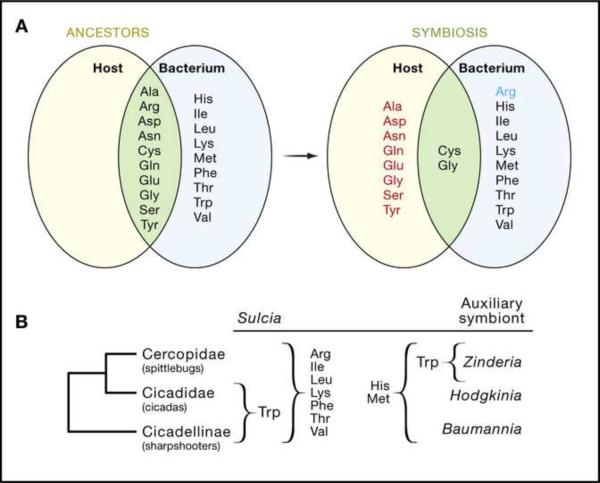Figure 2.
Coevolution of Amino Acid Biosynthesis in Plant Sap-Feeding Insects and their Bacterial Symbionts (A) In the symbiosis between the pea aphid and Buchnera bacteria, the Buchnera (but not aphid) has lost the capacity to synthesize eight amino acids (red), and the aphid (but not Buchnera) has lost the capacity to synthesize arginine (blue) relative to the ancestral condition (E. coli, a relative of Buchnera, and a generalized insect, respectively). The one-reaction synthesis of glycine from serine is retained by both partners. Cysteine is synthesized by different pathways in the two partners (from methionine in the aphid, from serine in Buchnera).
(B) Spittlebugs, cicadas and sharpshooters bear two bacterial symbionts, Sulcia and an auxiliary symbiont with complementary amino acid biosynthetic capabilities. The amino acids produced by each bacterium are made available to both the insect host and the alternative bacterium. Both bacteria require the ten non-essential amino acids from the host.
[ala:alanine; arg: arginine; asn: asparagine; asp: aspartate; cys: cysteine; gln: glutamaine; glu: glutamate; gly: glycine; his: histidine; ile: isoleucine; leu: leucine; lys: lysine; met: methionine; phe: phenylalanine; pro: proline; ser: serine; thr: threonine; trp: tryptophan; tyr: tyrosine; val: valine].

